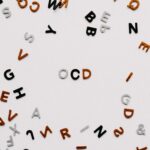
It is normal to check that things are in order, safe or correct, probably multiple times daily. For most of us, one or two checks is sufficient to feel confident in the state of things and move on. However, people with checking compulsions often get locked into prolonged, repetitive, fraught check-doubt-check cycles.
Rachman (2002) introduced a characteristically simple and elegant model for understanding checking compulsions. Two circumstances are necessary for checking compulsions to occur:
- First, people view themselves as personally responsible for preventing harm; and
- Second, they are unsure their efforts have successfully removed harm or reduced its probability to a tolerable level.
Three factors will vary the duration and intensity of the checking compulsion:
- Increased responsibility,
- Increased estimates of the probability of harm, and
- Increased estimates of the severity of harm.
These factors are not independent, such that harm estimations will increase with the extent to which the person holds themselves responsible for it, and responsibility for preventing that harm increases the more they check. Thus, Rachman (2002) proposes that checking persists due to self-perpetuating mechanisms.
There is considerable evidence for self-perpetuating mechanisms in checking, particularly that the more a behaviour is repeated, the less confidence one has in one’s subsequent memory for it. There is also very consistent and solid evidence that responsibility moderates distress over obsessional thoughts, urge to act on a compulsion, and estimates of the probability and severity of harm. There is also evidence that estimates of harm severity and probability influence reassurance seeking (which Rachman calls “checking by proxy”).
To date, no studies have examined the impact of the three modifiers of checking behaviour proposed by Rachman on checking duration and intensity. The purpose of this study was to address this lacuna in the literature using an in vivo experiment (Radomsky et al, 2022).

How many times have you double checked that you turned the stove off before leaving the house? People with checking compulsions often get locked into prolonged, repetitive, fraught check-doubt-check cycles.
Methods
Participants were 30 people with OCD with clinically significant checking concerns recruited from the community and 30 undergraduate students. The study was run in a lab kitchen featuring a functioning stove with four burners and a bank of 4 lamps plugged into a power bar. The lamps represented low harm severity (that is, if they were on when they were supposed to be off, the only harm would be electricity waste), and the stove burners represented high harm severity (that is, if they were left on when they were supposed to be off, they could cause a fire). The probability of harm was manipulated by having participants check the stove and lamps under two sets of circumstances; i) all the lamps and burners were functioning; ii) half the burners and lamps were visibly not functioning, and participants were told they presented zero risk of harm if left on.
Participants were also randomly assigned to a high or low responsibility condition. In the high responsibility condition, participants were asked to sign a contract stating that they “assumed full and complete responsibility for any damage, harm, or costs that might result from their upcoming checks”, and they were left alone in the kitchen to check. In the low responsibility condition, participants signed a contract stating that the researcher assumed all responsibility for damage, and the researcher was present during the checks.
Thus, the study was a 2 (Group; OCD vs control, between participants factor) x 2 (Responsibility; high vs low, between participants factor) x 2 (harm severity; low vs. high; within participants factor) x 2 (harm probability; low vs high, within participants factor) mixed design.
Results
- Consistent with hypotheses, the OCD group spent longer checking overall
- Both groups checked the stove longer than they checked the lights, and both checked the lamps/burners that were working longer than they checked those not working
- However, there was no main effect of responsibility
- Both groups checked the stove longer than the lamps, but the effect was stronger in the OCD group
- Finally, there was a three-way interaction between seriousness, probability, and group, such that the the OCD group checked even longer than the non-clinical group under high harm severity and likelihood.

Participants with OCD spent longer checking whether stoves were safe than a control group of participants without OCD.
Conclusions
The authors conclude that their findings are consistent with Rachman’s (2002) model of checking:
Results were mostly consistent with the theory, demonstrating that under conditions of enhanced seriousness, and probability of harm, individuals checked more, especially those with a diagnosis of OCD who check compulsively during their daily lives

Individuals checked more under conditions of enhanced seriousness and probability of harm.
Strengths and limitations
Unfortunately, the responsibility manipulation was not as effective as expected. That no main effect of responsibility was found is inconsistent with previous work, suggesting the manipulation itself was problematic in some way. A number of analyses in this study were underpowered, which complicates interpretation of both positive and null findings. It is challenging to conduct research with people with OCD who also have specific symptoms, such as checking, as the base rate in the population is low to begin with. However, inclusion of people with OCD was also a strength of the study. The authors also note that although their goal was to create an ecologically valid paradigm, there are still limits to how close checking behaviour in a lab environment is to checking that occurs within people’s own environment.

Are checking behaviours conducted in a laboratory kitchen really the same as checking behaviours in a real life kitchen?
Implications for practice
People with OCD who check, do not check everything all the time. That is, they do not have a general deficit that produces checking. Instead, this study contributes to a solid body of evidence that checking emerges when important context factors are present, as argued by Rachman (2002). This underscores the critical importance of an idiographic case formulation which informs treatment. In particular the findings have implications for exposure-based interventions and behavioural experiments, as neither are likely to achieve new learning if the contextual factors that activate the OCD system are absent.

People with OCD do not have a general deficit that produces checking, but rather checking emerges when important context factors are present. Interventions should therefore focus on ameliorating these contextual factors in real-world settings.
Statement of interests
I have known Dr. Radomsky for many years and consider him a close colleague. We collaborated on a paper in 2016.
Live at #BABCP2022 on 21st July 2022
Prof Adam Radomsky (the lead author of this paper) will be talking about this research in his #BABCP2022 keynote talk at 4-5pm on Thursday 21st July 2022. Follow the social media coverage on Twitter using the hashtag #BABCP2022. The Mental Elf will be live tweeting from London!
Listen to the #BABCP2022 podcast
Speaking before their keynotes at the BABCP 2022 Annual Conference, Roz Shafran and Adam Radomsky talk about OCD, Control, Doubt, Perfectionism & CBT.
Links
Primary paper
Radomsky, A., Alcolado, G., Dugas, M. J., & Lavoie, S. L. (2022). Responsibility, probability, and severity of harm: An experimental investigation of cognitive factors. Behaviour Research and Therapy, 150, 104304.
Photo credits
- Photo by Annie Spratt on Unsplash
- Photo by KWON JUNHO on Unsplash
- Photo by Ralph Hutter on Unsplash
- Photo by Irene Strong on Unsplash
- Photo by Jason Briscoe on Unsplash
- Photo by Patrick Tomasso on Unsplash
